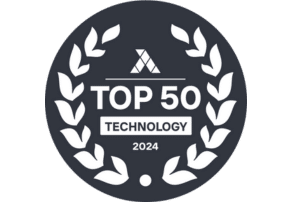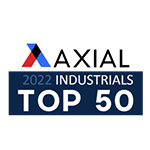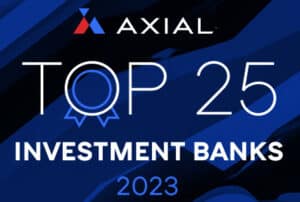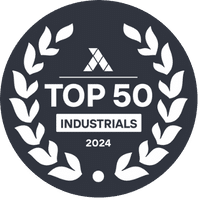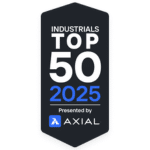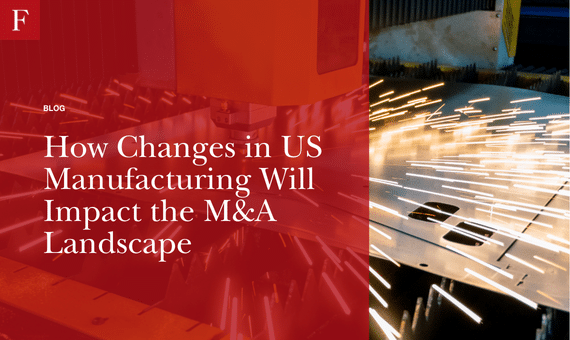
How Changes in US Manufacturing Will Impact the M&A Landscape
A resurgence of American manufacturing is well underway as President Trump marked the first 100 days of his second presidency with sweeping policy changes. While much of the discussion has centered on the effects of his tariffs, the administration’s promise of business-friendly policies and tax incentives are already yielding significant new investments in US manufacturing.
Most recently, pharmaceutical company Johnson & Johnson announced a $55 billion investment in US manufacturing, as well as Hyundai Motors who announced a commitment of $21 billion in domestic manufacturing from 2025 to 2028. American chip maker Nvidia announced in April that it will be manufacturing chips and AI computers in the US for the first time.
This is not a totally new trend either as corporate interest in reshoring initiatives has been steadily growing over the last few years. Geopolitical shifts and a focus on supply chain resilience are driving American investments, as annual manufacturing construction spending reached a record $234 billion in May 2024, tripling since January 2020.
Though growth in new build will certainly continue, this resurgence in American manufacturing also presents an opportunity to consolidate, acquire competitors or expand into new markets. Building new factories and getting them up and running takes time. Companies looking to quickly scale will do so through a combination build and buy strategy. Middle market manufacturers that specialize in component or advanced manufacturing will benefit the most by offering a simple solution for larger manufacturers looking to quickly secure capacity.
Ultimately, any time there is volatility in a market that can impact a business’s bottom line, strategic activity is an answer to margin compression. Acquisitions during market downturns are quite common—not only is it opportunistic but it can help strengthen companies willing to eliminate redundancy and combine firms to secure their future in an uncertain market backdrop.
The sum of the parts is greater than the parts themselves, and those companies who view market downturns through an opportunistic lens are already at an advantage.
Onshoring as a Strategic Advantage
There are three key factors incentivizing renewed interest in American manufacturing, which we expect the M&A market will benefit from over the next 12 to 18 months. They include:
- Tax incentives
- Tariffs
- Security
President Trump’s early promises of lower taxes, fewer regulations and an America first mentality offer major benefits for companies interested in merging or selling their business.
President Trump has suggested lowering the corporate tax rate from 21% down to 15%. Trump’s proposed tax package would extend the 2017 tax cuts, which brought the corporate rate down from 35%.
Lowering the corporate tax rate can have a meaningful impact on the M&A landscape by boosting cash reserves and reducing tax burdens, making acquisitions more attractive to buyers and sellers. Increased liquidity, for example, can fund more and larger acquisitions, potentially leading to a surge in strategic activity as companies seek to leverage tax savings for future growth. Additionally, lower corporate tax rates imply increased valuation as potential buyers see a greater return on investment.
It is important to note, however, that the overall impact of tax cuts on M&A activity can be complex and dependent upon factors such as size of tax cut, overall economic climate, and target industry.
Bringing production back to the US also helps companies avoid Trump’s 10% baseline tariff on almost all foreign imports. Reciprocal tariffs have additionally been placed on goods imported from other key trading partners, including China.
Security is another aspect that has come into play in recent years as US manufacturers struggle to protect their intellectual property (IP) when manufacturing in China. IP laws that protect manufacturers from counterfeit products, imitation goods and theft are not consistently enforced in the country.
China is not known to play fair utilizing a first-to-file system that leaves manufacturers susceptible to IP theft and even hacking a manufacturer’s security. According to IBM’s X-Force 2025 Threat Intelligence Index, the manufacturing industry accounted for 26% of all cyberattacks in 2024 and was the No. 1 targeted industry for the fourth year in a row.
Tariffs: An Opportunity or Constraint?
While tariffs likely will signal a shift from offshore to onshore manufacturing for large companies, they also introduce challenges for privately held, middle market companies. Uncertainty about future trade policies can foster an environment of caution, slowing decision making for significant investments such as acquisitions for the unforeseen future. Volatility and M&A activity typically don’t go hand in hand, indicating investors may proceed carefully over the next three years as increased costs and fluctuating market conditions can contribute to lower valuations.
The uncertainty of tariffs in President Trump’s second term, however, is likely temporary. Many key global trade partners have already entered into negotiations with the Trump Administration, increasing pressure on China to come to the table and negotiate. Although early in its tariff strategy, the US is having significant discussions with its closest trade partners around the globe. As of April 7, 16 global trade partners, including Japan, the United Kingdom, Canada, and South Korea, have entered into trade negotiations to realign global trade with the US. Most notably, the US has recently announced an agreement with the United Kingdom.
Regardless of the volatility in the markets created by the global reset of trade agreements, potential for strategic opportunities will still exist as companies view tariffs as an opportunity to consolidate, acquire competitors or expand into new markets. International firms, for example, will be motivated to acquire US based assets to offset the impact of importing goods into the US.
Reshoring Is Here to Stay
The Trump Administration’s focus on American manufacturing is bringing reshoring into a public light, but these initiatives have been in motion since his first term in office. The COVID-19 pandemic and ongoing global disruptions exposed weaknesses in supply chains long dependent on overseas suppliers. Yes, geopolitical tensions are a driving factor, but the need for more transparent and resilient supply chains means these initiatives are here to stay.
Large manufacturers and OEMS are also looking to diversify their supply chains, creating new opportunities for smaller US-based suppliers.
As Americans begin to see the real benefits of increased employment and higher wages on a larger scale, unwinding any progress will be political suicide. Don’t expect to see a policy shift away from manufacturing onshore even with a change in regiment.
Another barrier would be unwinding the large amount of investment already pouring into the US. These long-term investments mark a new era of production for many companies.
FOCUS Offers a Global Perspective
Backed by more than two decades in global investment banking, Bryce Stirlen and the team at FOCUS Investment Banking bring a global perspective and new level of sophistication to the middle market. As manufacturers begin to work through these changes, the connections Stirlen has built working for multinational clients across advanced manufacturing sectors offer unprecedented access and industry insight.
Stirlen brings a unique skill set to the team with real world experience advising middle market firms on strategic, operational and financial management, and turnarounds. He is also a business owner and operator with firsthand understanding of the ebbs and flows of operating a business.
For more information or to have a discussion, contact Stirlen at 312-209-3800 or [email protected].




